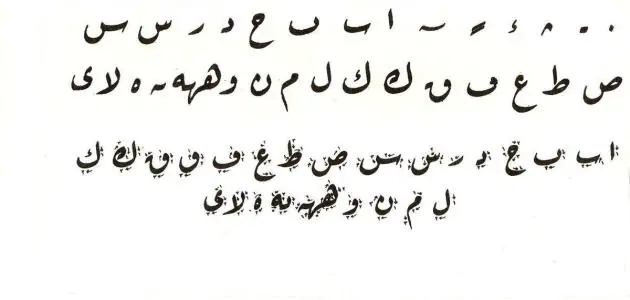11 Tips to Improve Your Arabic Reading Skills

A study (دراسة) conducted at the University of Haifa revealed that the same left hemisphere of your brain that is responsible for logic (المنطق), mathematics (الرياضيات) is also in charge of reading Arabic. Reading other languages on the other hand like Hebrew and English involves both sides of the brain, the right and the left, according to the study.
Apparently, Arabic is too complicated for your right side which is responsible for interpreting visual information, shapes and patterns. So, even if you have been struggling with reading Arabic, you were actually doing a workout for your brain. Here are some tips that will help you improve your Arabic Reading skills.
1 – Master the Arabic Alphabet
The Arabic Alphabet is called “Abjadeyah الأبجدية ” .Unlike English, Arabic letters are not written separated they are written in a cursive style and read from right to left. Many letters look similar but distinguished from one another by dots like the letters (ب,ت,ث ) or (ج,ح,خ), (د,ذ), (ر,ز), (ص,ض), (ط,ظ), ((ع,غ. In order to read well in Arabic you need to master these letters and know exactly which sounds they make.
2 – Read in different fonts
There are several fonts in Arabic, the most famous one is (al – Naskh النسخ): which you can find in most of the books and typed texts. However, hand writing can be slightly different as we use more (al – Raq’a الرقعة ) when we write because it’s faster and easier. So, it’s important to get familiar with different Arabic text formats.


3 – Study roots and patterns of words (الجِذْر والوَزْن)
Knowing the root system in Arabic leads to a better reading comprehension. It helps you to guess the meanings of words faster and to link them in an organized pattern since the words that have the same root in Arabic are all connected in their meanings. The root usually consists of three letters: “ف ع ل”
4 – Read purposefully
You need to set a purpose for your reading and be clear about what you’re looking for. Don’t just read aimlessly. Focus on something such as: grammatical rules, specific vocabularies, definitions, quotes, etc. also, you can begin with short simple Arabic stories which you can find here:
https://www.ibnulyemenarabic.com/category/arabic-language/arabic-short-stories/
5 – Read multiple times
Read more than just once. Each time try to focus on something new. For example, the first time focus on the general idea of the text. The second time learn new vocabularies. The third time look for a grammatical rule.
6 – Mark the text
Underline keywords, highlight the important words and make notes. This process can help you concentrate and makes the book or text easier to survey later. Especially, when you’re reading a book or a novel which you can find here:
https://alkitab.com/s1040-short-story-assortment.html
7 – Note your thoughts
You can make small notes about what you think of the text as it helps with remembering the vocabulary you’ve just read.
8 – Manage vocabulary
When you read a book or a text, you can be overwhelmed by the amount of the new and unfamiliar vocabulary you encounter. So, when you use the dictionary, try to be selective. Don’t stop at every single unfamiliar word to look it up as this could make you feel bored and tired very quickly. So, select a number of words and know which words to ignore.
9 – Summarize the text
When you finish reading, summarize the text in points by writing them down or saying them out loud. This way, you get to repeat what you have read and using your own way of repeating it. Also, you can read the summary of the book before and after reading it.
11 – Read with other people
Finally, consider a “study group” for example or someone whom you can read with to exchange opinions and thoughts about the book you’re reading as it increases the ability to understand and remember key points in texts.
More about the study mentioned above:




 Previous Post
Previous Post



